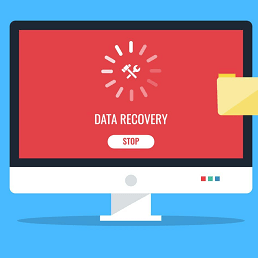What is cloud-based analytics?
A cloud is essentially a remote server or collection of servers spread across the globe and can be accessed by anyone, no matter where they may be, just by using an internet connection. Whenever a user opens an application, either a web or a mobile, they essentially use the cloud, which houses data for that respective application. The cloud acts as a remote storage where users can upload or download files for easy access.
The need for the Cloud
Why do we need the cloud anyways? The cloud acts as secondary storage and can be used to store or backup files or other forms of data on servers in a secure way. Think about it this way: if something happens to the primary device on which we keep all our data, the data will eventually be lost and can not be recovered. But, with the cloud, all files are saved and can be backed up or recovered quickly.
What is cloud computing?
So far, we have looked at the cloud as a secondary storage medium for users to store data. However, the cloud is much more than just a storage hub. The cloud can also host multiple on-demand services alongside data storage.
For better understanding, we can use a simple analogy, say we have just started a new online business; the business needs to run on a website where we have multiple customers. Initially, we would need to host the website using a server, we can use a dedicated server, but that would be a costly solution as the business continues to expand and would also need periodic maintenance. This would also add to the overall costs of running the business. The solution to all these problems is using the cloud as a machine to host the website and store all the data for that respective website in exchange for a nominal fee, depending on the required resources.
Cloud providers
Advantages of utilizing cloud computing services
Economical
By utilizing cloud resources, people can cut unnecessary costs associated with the initial purchase of equipment like hard drives, server racks, etc., followed by periodic maintenance as all hardware equipment will eventually fail and must be replaced. When compared against the cloud, it is seen as a cheaper alternative.
Easy data access
For users who intend to use the cloud as a storage platform, the cloud can access files anywhere, anytime. This can help companies carry out remote operations so employees can access the company’s data without physically needing to be in the office.
Easy Recovery
In the event of a system failure, by a natural or human-caused disaster, all data can quickly be recovered as it is stored on a server that can be potentially located miles away. Hence, this can also mitigate the risks associated with the destruction.
Easy scalability
Initially, when a business owner wants to use cloud resources to run their platform, they need a few resources. However, as the platform gets more traffic, more resources will be needed to manage all that traffic. Using cloud services, the business owner can extend the resources allocated to them according to their needs.
Cloud-based analytics
When we visit a web page, we may get recommendations similar to our previous searches on the web. For example, if we visit an online store, we may see recommendations on what to buy along with our initial purchase. Similarly, when we navigate the internet, we eventually see advertisements for things we previously searched for. This is all due to cloud-based analytics. To summarize, cloud-based analytics refers to the analytical algorithms running on the massive volume of user data stored in the cloud to find similar patterns and extract new insights.
It is important to know how cloud analytics is different from data analytics. Both are interrelated terms. However, the significant differences reside in how they are used. Cloud analytics refers to deploying powerful analytic software on the data in the cloud servers. In contrast, data analytics is a more generic term for finding valuable insights on data on the cloud or on-premises systems.
How does cloud analytics work?
Cloud analytics works through software that carries out analytics or the big data stored on the cloud. This software is deployed on servers that provide cloud services, and all the data collected by the software is stored on the cloud, where it can be retrieved quickly and easily. The cloud-based analytical tools learn from the data on their own using unsupervised machine learning algorithms to find valuable data insights and predict future behavior based on the user's inputs and previous user data. The following elements are used to carry out cloud analysis:
Raw data (Ingest): All the data is stored in the servers in its original form.
Data preprocessing applications (Process): Large volume of data is processed to make sense of the data and standardize it for effective results.
Machine learning models/algorithms (Analyze): Mathematical models used to predict the outcomes and find similar or unique patterns in large amounts of preprocessed data.
Why use cloud analytics?
Now the question arises, why do we need cloud analytics? To answer this question, we shall need to look at all the benefits of carrying out cloud analytics which are summarized below:
Flexible performance: With cloud-based analytical tools, we can reuse the same services or scale depending on the variations in the data.
Heightened security: As the data on cloud servers is backed up into numerous locations all around the globe, we need a data-sharing mechanism manually. This is a huge security risk as hard drives can be damaged or stolen in transit. However, with cloud-based analytics, we can view the complete data simultaneously and keep a log of people accessing similar data.
Improved data accessibility: With cloud deployment, multiple individuals in teams who need access to large amounts of data can easily collaborate through the platform.
Improved customer insights: With cloud-based analytical tools, businesses can analyze customer data more effectively by providing powerful analytical algorithms.
Enhanced decision-making: As huge companies need to make business decisions faster, with cloud-based analytics, they can make effective business decisions in an informed manner in no time.
Cloud-based analytical tools
Cloud-based analytical tools can help a considerable organization process large datasets easily and affordably. Some of the powerful cloud analytical tools used by businesses today are mentioned below:
AppOptics Custom Metrics and Analytics
IBM Cognos Analytics
Microsoft Power BI
Zoho Analytics
Free Resources





